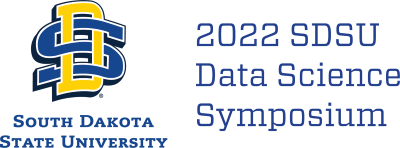Session 3: Patient-specific Analysis and Visualization of Cancer Pathways
Presentation Type
Invited
Track
Other
Abstract
Introduction: Analysis of transcriptomics data enables us to quantify gene expression and determine activity of cancer pathways. Evaluation of gene sets and pathways, and visualizing pathway activity for each patient is important to make inferences about treatment outcomes, overall survival, and potential therapeutic targets. However, pathway analysis of cancer patient samples without their respective normal remains challenging.
Methods and Results: Our method displays patient-specific pathway activation relative to reference populations from The Cancer Genome Atlas (TCGA) and The Genotype-Tissue Expression (GTEX). Patient-specific pathway activity scores are shown within the respective percentiles and averages of the TCGA and GTEX cohorts to visualize and compare a patient's individual pathway activation profile within the TCGA tumor and GTEX normal reference population. Patient-specific pathway scores are obtained from gene expression data of each patient using PROGENy (Pathway RespOnsive GENes for activity inference) and transformed into activity scores for each of 14 cancer pathways. The pathway activity scores of each new patient tumor sample are scaled using the parameters of scaled pathway activity scores obtained from TCGA and GTEX gene expression data of all cancer tissue types. Lastly we visualized the pathway activity scores of each patient sample. Conclusions Our visualization method is intended to look at the different activation patterns of the 14 cancer pathways in our patient samples. Pathway genes of interest can then be evaluated in the patient samples to identify causal mutations and their associations with the pathway activity scores hence aid in treatment selection and development of precision medicine therapeutics.
Start Date
2-8-2022 9:50 AM
End Date
2-8-2022 10:50 AM
Session 3: Patient-specific Analysis and Visualization of Cancer Pathways
Dakota Room 250 A/C
Introduction: Analysis of transcriptomics data enables us to quantify gene expression and determine activity of cancer pathways. Evaluation of gene sets and pathways, and visualizing pathway activity for each patient is important to make inferences about treatment outcomes, overall survival, and potential therapeutic targets. However, pathway analysis of cancer patient samples without their respective normal remains challenging.
Methods and Results: Our method displays patient-specific pathway activation relative to reference populations from The Cancer Genome Atlas (TCGA) and The Genotype-Tissue Expression (GTEX). Patient-specific pathway activity scores are shown within the respective percentiles and averages of the TCGA and GTEX cohorts to visualize and compare a patient's individual pathway activation profile within the TCGA tumor and GTEX normal reference population. Patient-specific pathway scores are obtained from gene expression data of each patient using PROGENy (Pathway RespOnsive GENes for activity inference) and transformed into activity scores for each of 14 cancer pathways. The pathway activity scores of each new patient tumor sample are scaled using the parameters of scaled pathway activity scores obtained from TCGA and GTEX gene expression data of all cancer tissue types. Lastly we visualized the pathway activity scores of each patient sample. Conclusions Our visualization method is intended to look at the different activation patterns of the 14 cancer pathways in our patient samples. Pathway genes of interest can then be evaluated in the patient samples to identify causal mutations and their associations with the pathway activity scores hence aid in treatment selection and development of precision medicine therapeutics.

